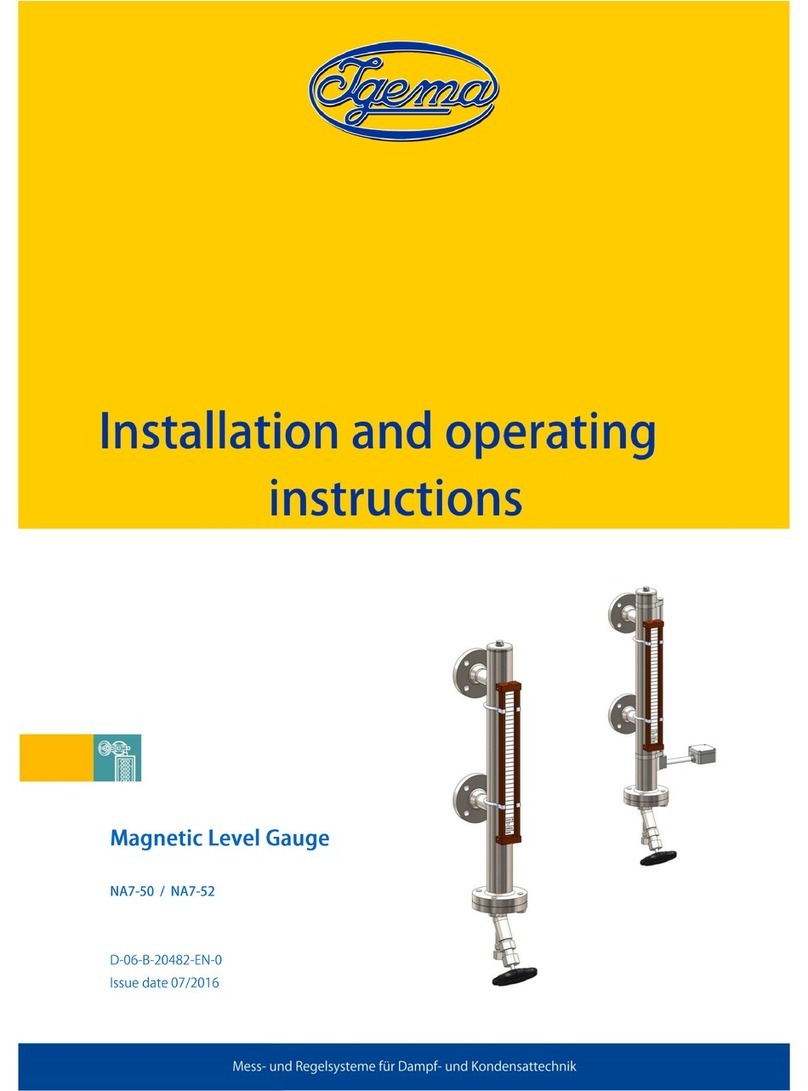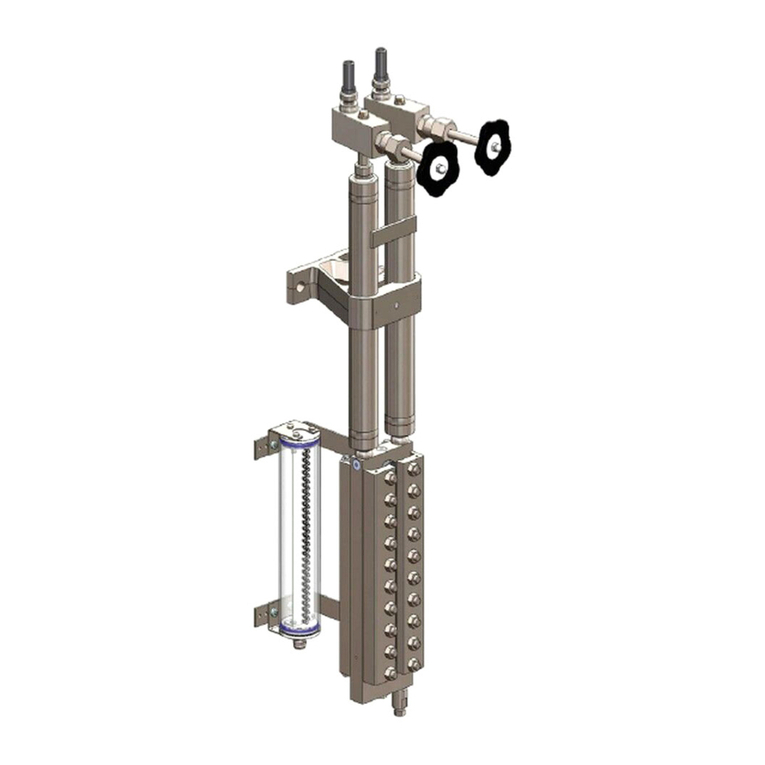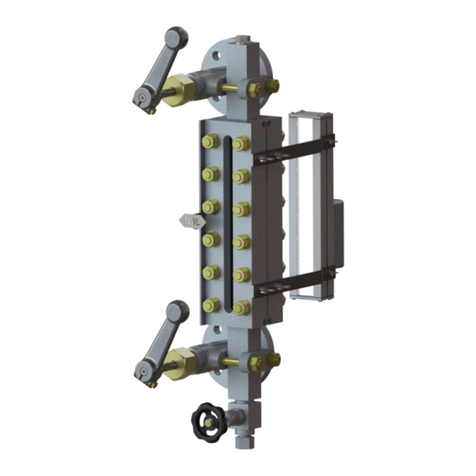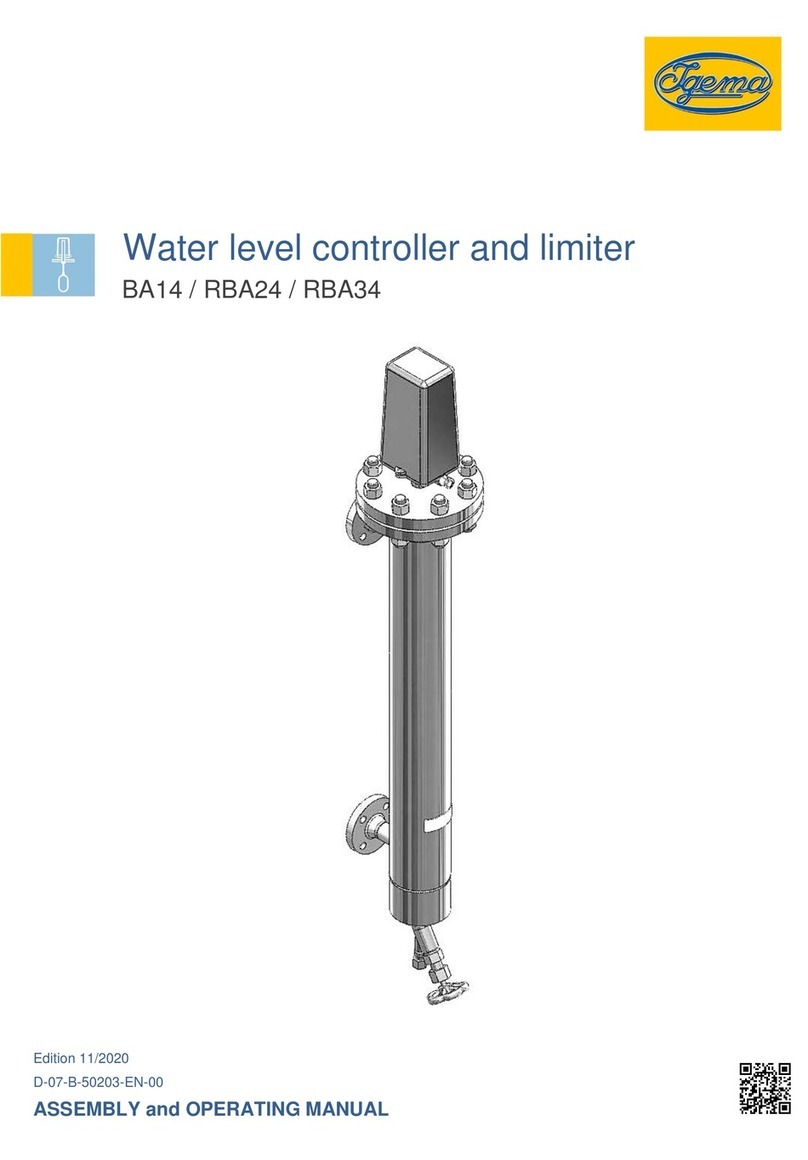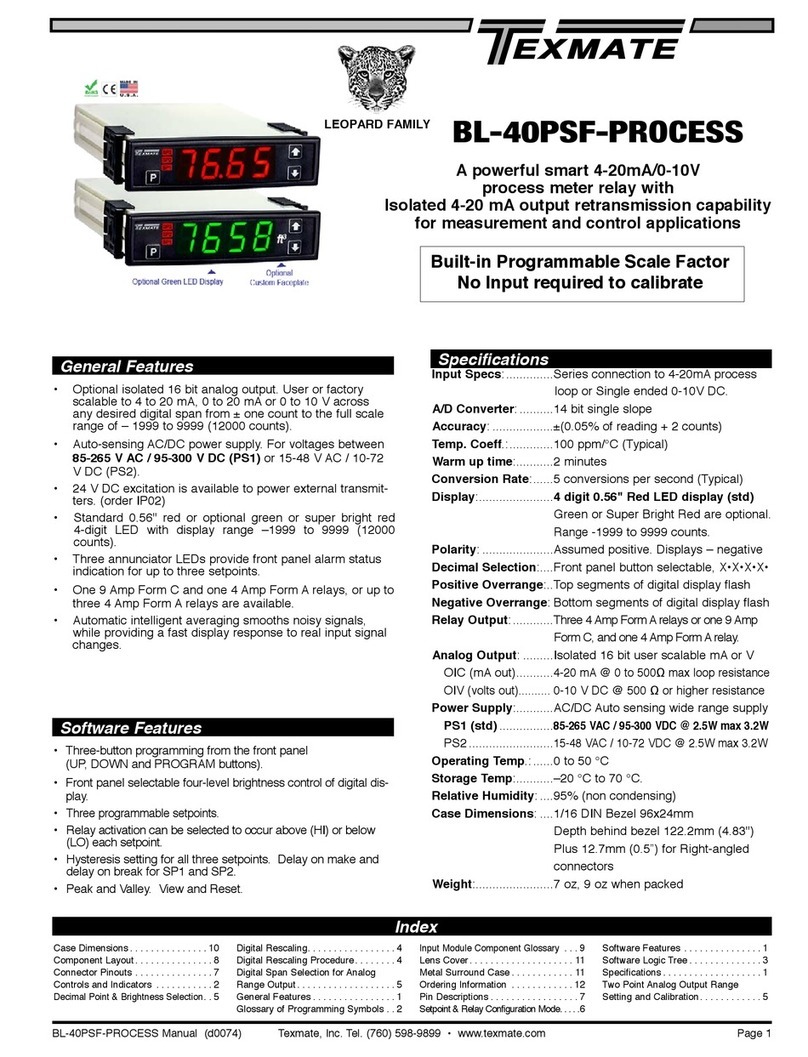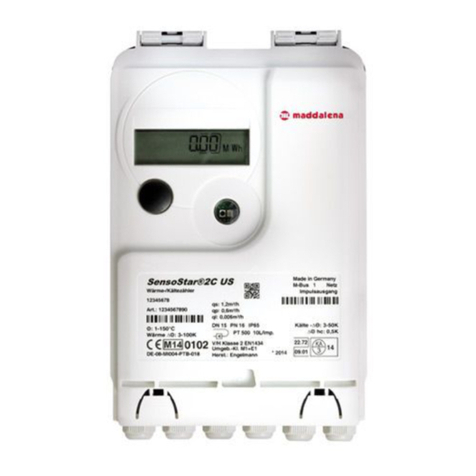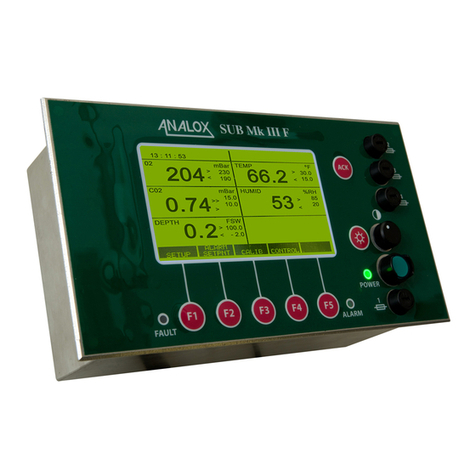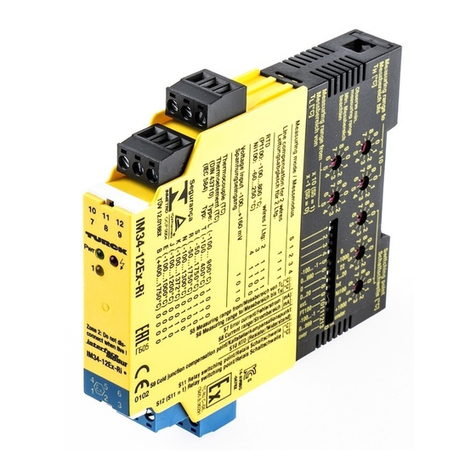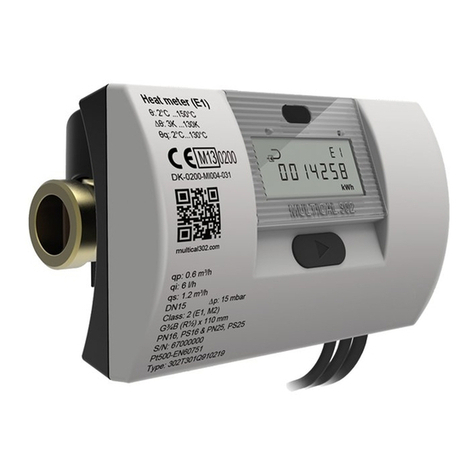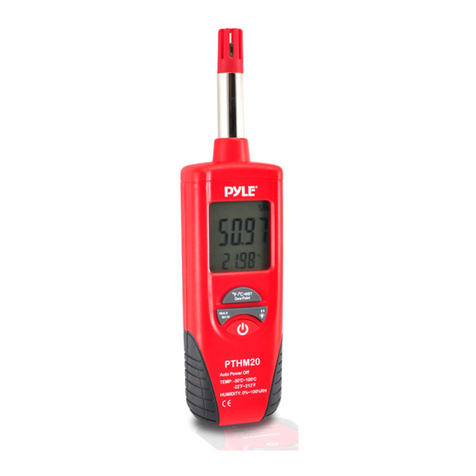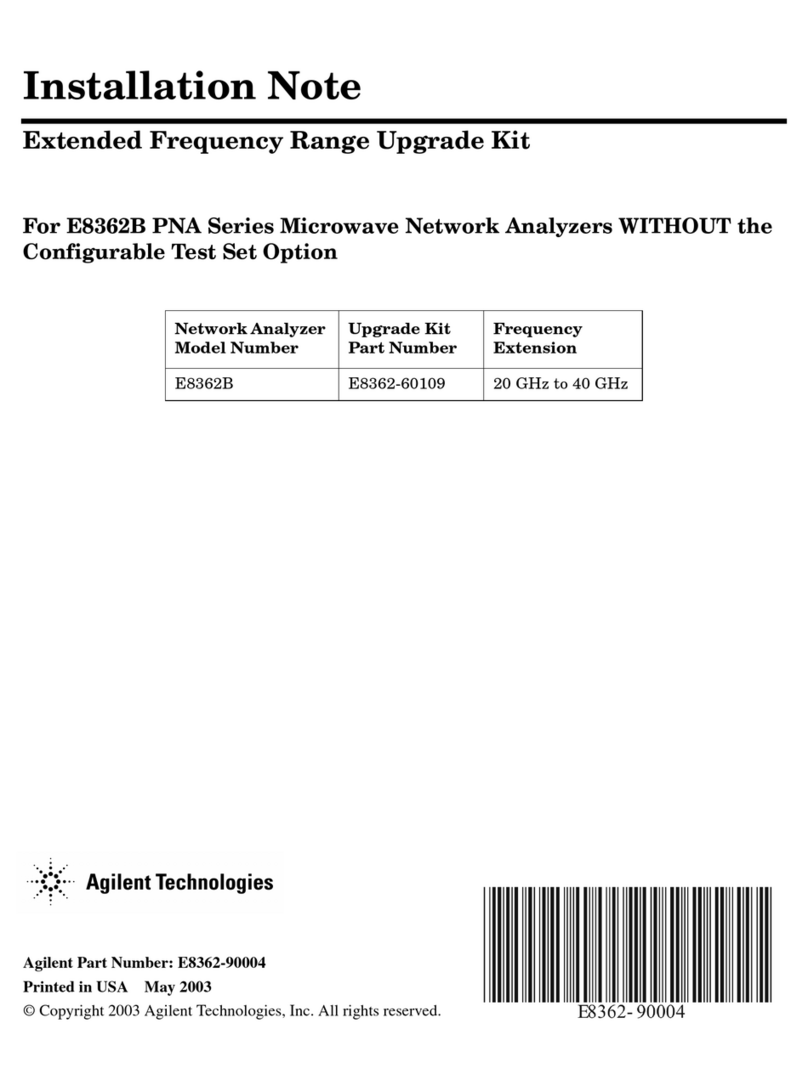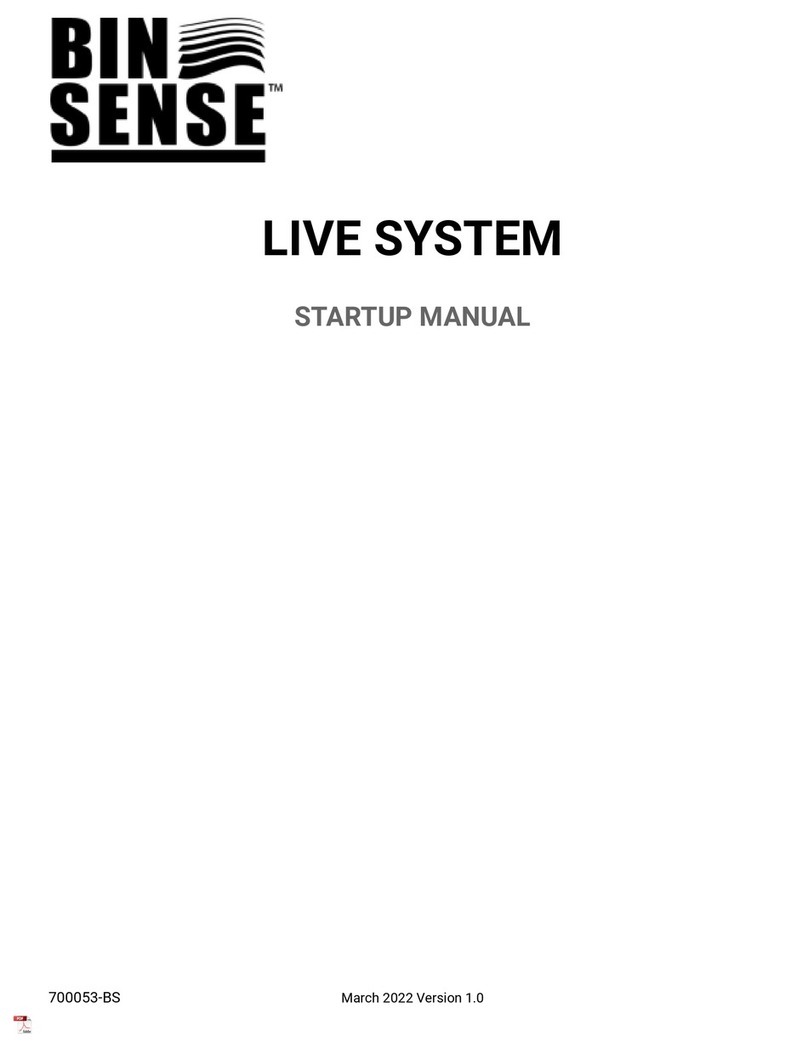Igema NA7-45 User guide

Edition 07/2021
D-06-B-51014-EN-00
INSTALLATION AND OPERATING INSTRUCTION
NA7-45 / NA7-130
Magnetic level indicator

2
Product philosophy
Thank you for placing your trust in IGEMA and deciding in favour of one of our
high-quality products.
For more than 100 years, measuring and control systems have been developed,
produced and sold worldwide under the IGEMA brand name.
“Steam is our passion” and we offer you the entire programme for the safe and
economic operation of your plants, especially in the steam and condensate sector.
Please read the installation and operating instructions carefully to ensure a safe and
reliable operation.
In addition to the information on installation and operation, you will also find important
information on maintenance, care, safety and value retention of your measuring and
control system.

3
Table of contents
1. Important safety instructions.............................................................................6
1.1 Symbols used in these instructions.................................................................6
1.2 Intended use of the device..............................................................................7
1.3 Safety at work.................................................................................................8
1.4 Safety instructions for this device....................................................................9
1.5 Exclusion of liability.........................................................................................9
2. Contents of packing..........................................................................................10
3. Important information.......................................................................................10
3.1 Intended use.................................................................................................10
4. Explanations......................................................................................................10
4.1 System description........................................................................................10
4.2 Function........................................................................................................10
5. Technical data ...................................................................................................11
5.1 Versions........................................................................................................11
5.2 Type of connection........................................................................................12
5.3 Materials.......................................................................................................12
5.4 Application limits...........................................................................................12
5.5 Corrosion resistance.....................................................................................12
5.6 Identification plate / Marking.........................................................................12
6. Construction......................................................................................................13

4
Table of contents
7. Assembly...........................................................................................................13
7.1 Version with flange........................................................................................13
7.2 Version with welding end..............................................................................14
7.3 Heat treatment of weld seams ......................................................................14
7.4 Flap indicator ................................................................................................14
7.5 Float installation............................................................................................14
7.6 Drain piping...................................................................................................14
7.7 Assembly of additional equipment (for retrofitting, otherwise already
pre-installed).................................................................................................15
8. Electrical connection........................................................................................15
8.1 Magnetic switch ............................................................................................16
8.2 Primary element............................................................................................16
9. Commissioning .................................................................................................16
9.1 Adjustment of indicating flaps.......................................................................16
9.2 Commissioning of unit together with the boiler .............................................16
9.3 Commissioning of unit if boiler is already in operating condition...................17
9.4 Anti-frost device............................................................................................17
10. Maintenance ......................................................................................................17
10.1 Cleaning of standpipe (2) and float (2.1).......................................................17
10.2 Tightening torques........................................................................................18

5
Table of contents
11. Drain valve.........................................................................................................19
11.1 Construction..................................................................................................19
11.2 Assembly ......................................................................................................20
11.3 Commissioning .............................................................................................21
11.4 Maintenance .................................................................................................21
12. Spare parts ........................................................................................................22
12.1 Magnetic level gauge....................................................................................22
12.3 Drain valve....................................................................................................22
13. Decommissioning .............................................................................................23
13.1 Disposal........................................................................................................23
14. Warranty.............................................................................................................23
15. Manufacturer´s Declaration..............................................................................24

6
1. Important safety instructions
KEEP THESE INSTALLATION AND OPERATING INSTRUCTIONS IN A SAFE PLACE!
Commissioning as well as maintenance and repair work may only be carried out by qualified
persons in compliance with the installation instructions given in this operating manual. The
correct installation, commissioning, maintenance and operation of the device presupposes that
the person in charge is familiar with measurement and control systems and complies with the
general installation and safety instructions. In addition, the correct and intended use of tools
and the handling of safety devices must be ensured. Unqualified personsmust not be assigned
the above tasks!
IGEMA GmbH accepts no liability for damage to property or personal injury caused by
unqualified persons or by failure to observe these installation and operating instructions. If no
sufficiently qualified person can be found, IGEMA GmbH can be commissioned with the
installation/maintenance.
1.1 Symbols used in these instructions
In the following installation and operating instructions, safety instructions are marked with the
following symbols:
Danger
This symbol and signal word refer to a potentially
hazardous situation which could result in death or
injuries if ignored.
Caution electrical voltage
This symbol and signal word indicate live parts
with an immediate danger of death from electric
shock.
Caution hot
This symbol with a signal word indicates a
potentially hazardous situation that can result in
severe burns and scalds all over the body.

7
Caution
This symbol and signal word refer to a potentially
hazardous situation which could result in
personal injury, property and environmental
damage if ignored.
Caution
This symbol and signal word refer to a potentially
hazardous situation which couldresult in damage
to the equipment if ignored.
Info
This symbol indicates useful information and
recommendations as well as measures that will
prolong the value of your measuring and control
system.
1.2 Intended use of the device
Use these installation and operating instructions, the identification on the rating
plate (see 5.6) and the technical data sheet to check whether the device is
suitable for the intended use/application. The device complies with the
requirements of the European Pressure Equipment Directive 2014/68/EU.
The device may only be used to indicate fill levels on containers.
The maximum values of the pressure and temperature range of the device must be checked
before installation. If the maximum allowable operating values of the device are lower than
those of the system on which it is to be installed, protective instruments for the device, such
as pressure reducers or similar, must be provided to avoid limit situations. The device may
only be used in accordance with the information in these installation and operating instructions
or for the parameters and applications agreed in the supply contract. (see rating plate, 5.6)
The operator of the direct water level indicator is obliged to familiarise himself on the
compatibility of the medium and the device. In case of doubt, contact the relevant installation
manager or site manager.
The correct installation position, alignment and flow direction of the device must be observed!
Before installing the IGEMA product on boilers or containers, it is essential to remove all
protective covers and, if necessary, the protective film from rating plates and sight glasses.
Caution

8
1.3 Safety at work
Before installation or carrying out maintenance work on the device, safe access
must be ensured and a secure working area with sufficient lighting must be
defined and marked out. Always use lifting equipment for heavy loads!
Before starting any work, carefully check which liquids or gases are or have been in the
pipeline. (flammable substances, irritating substances,substances hazardous tohealth) When
opening or dismantling the device, residues of the medium can escape. Subsequent fumes
are also possible in unpressurized and cold systems. Use designated PPE such as safety
goggles and respiratory protection!
Special attention must be paid to the condition of the environment around the installation or
maintenance site. Be aware of e.g.: potentially explosive atmospheres, lack of oxygen in tanks
and pits, dangerous gases/liquids, extremetemperatures, hot surfaces,fire hazard (e.g. during
welding) and moving machine and system components. Protect yourself from excessive noise
by taking the required protective measures.
For all maintenance work or new installations, on new or existing boilers or vessels, it is
imperative to check that the boiler or vessel has been depressurised andthat the pressure has
been safely reduced to atmospheric pressure. In principle, no system should be regarded as
unpressurized even if indicated by pressure measuring devices such as pressure gauges or
sensors. When releasing the pressure, make sure that no persons are in the release area.
Carefully check whether you and/or other persons in the vicinity need PPE to protect yourself
from external influences such as high and low temperatures, radiation, noise, danger to eyes,
loose objects that can fall down or chemicals.
There is always a risk of injury when handling large and/or heavy equipment. Observe the load
handling regulation as a minimum requirement for working with loads. Avoid handling the
device with your own physical force, e.g. by lifting, pulling, carrying, pushing or supporting it,
especially to prevent back injuries. Use lifting equipment to move heavy and bulky equipment
in accordance with Article 1, Section 2 of the German Load Handling Regulation
(LasthandhabV).
Under normal operating conditions the surface of the device can become very
hot! Under the maximum operating conditions, the surface temperature can
exceed 350°C. After shutting off or, if necessary, shutting down the boiler, wait
until the temperature has normalized to room level. To avoid the risk of burns
and scalds, always use PPE including safety goggles!
Danger
Caution
hot!

9
1.4 Safety instructions for this device
These installation and operating instructions are an integral part of the device
and must be forwarded to the responsible departments "Goods inward,
Transport, Installation, Commissioning and Maintenance". They must be kept in
such a way that the technical staff have access to these documents at all times.
If the device is passed on to a third party, these installation and operating
instructions must also be included in the national language of the third party.
Avoid shocks and hard contact during transport, as this can lead to damage. During
intermediate storage, the device must be kept dry and secured against damage.
When servicing the unit, make sure to use sharp-edged internal parts and avoid shards of
broken glass. There is a risk of cutting hands and arms! Always wear work gloves when
changing packing, valve seat and valve plug.
For units with a dead weight of 30 kg or more, the customer must provide adequate support
(e.g. via a spring suspension device, etc.). This can be attached to the holding strap/eyelet on
the device.
When returning goods to IGEMA GmbH, the applicable safety and environmental laws
according to GGVSEB [German ordinance on the national and international carriage of
dangerous goods by road, rail, and inland waterways] must always be observed. If there are
any risks to health or the environment due to residues or the device has a mechanical defect
this must be indicated when returning the device and the necessary precautionary measures
must be taken. If the returned goods are devices that have come into contact with or contain
hazardous substances, a safety data sheet must be enclosed, and the goods must be clearly
marked. In addition, the hazardous substance must be reported to the logistics service
provider.
Darauf achten, dass die im Gerät eingebrachten Permanentmagnete in der
Magnetisierung nicht verändert werden!
Magnetfelder im Nahbereich der Geräte ausschließen!
1.5 Exclusion of liability
IGEMA GmbH Mess- und Regelsysteme will assume no liability if the above regulations,
instructions and safety precautions are not observed and followed. If they are not expressly
listed in the installation and operating instructions, changes to an IGEMA device are carried
out at the risk of the user.
Der Magnetsperrschalter darf nicht geöffnet werden. Eine Verletzung des
angebrachten Siegels schließt jegliche Gewährleistung aus.
Achtung
Caution

10
2. Contents of packing
1. - Standpipe with indicating ledge
- Float and new gasket are packed on the outside of the unit
- Setting magnet is enclosed
Additional equipment (also possible for existing devices):
- Magnetic switch
- Contact bar with reed contacts (Primary element MRK-…)
- Drain valve
2 Mounting and operating instructions
3. Important information
3.1 Intended use
Magnetic level gauge NA7-45 / NA7-130:
The magnetic level gauge is a liquid level gauge which can be used for steam boilers and
containers.
The indication is made via a float operated magnetic system.
The product corresponding to the EU 2014/68/EU.
Applied standards as per EN 13445 / EN 12952 / EN 12953 / AD 2000 or ASME-Boiler.
4. Explanations
4.1 System description
The level gauge indicates the level in the boiler indirectly.
4.2 Function
The unit works according to the physical law of the communicating tubes.
The liquid level in the standpipe (2) is the same as the one in the boiler. The liquid level is
transmitted to the indicating ledge on the outside of the standpipe via a float with inner
magnetic system located inside of the standpipe. The magnetic system actuates
simultaneously additionally mounted switches (4) on the standpipe and/or a sensor (5) for
remote liquid level transmission.
Design sketches see chapter 6

11
5. Technical data
5.1 Versions
NA7 (version flange/cap)
> 2,6m
> 6m
Possible vent connections
Vent cap
Flange
Flange with vent flange
Possible drain connections
Flange with drain flange
Flange with drain valve

12
•To indicate a range > 2,6 m it is necessary to use 2 or more superposed indicating ledges.
•For level gauges longer than 6 m, the unit will be delivered in divided version with
intermediate flanges.
5.2 Type of connection
Standard : flanges according to DIN or ASME
On request : welding end or Socket Welding according to DIN or ASME
5.3 Materials
•Fluid side in stainless steel according to DIN or ASME.
•Float made of stainless steel; for low medium density, the float is made of titan
•Other components in contact with the medium and pressure-retaining components made
of carbon steel according to DIN or ASME.
5.4 Application limits
Max. all. pressure PS
[bar]
32
50
80
130
Max. all. temperature TS
[°C]
239
265
296
340
5.5 Corrosion resistance
The safety of the unit is not influenced by corrosion if it is used as intended.
5.6 Identification plate / Marking
The following data are indicated on the identification plate according to EN 19:
* Marking depending on the realization
A Date of manufacture D Max. all. temperature
B Type of unit E Nominal pressure (not specified)
C Max. all. Pressure F Nominal diameter

13
6. Construction
NA7
Legend
(1)
(2)
(2.1)
(2.2)
(2.3)
(3)
(3.1)
(3.2)
(4)
(5)
(6)
(A)
(D)
(W)
Connection studs
Standpipe
Float
Sealing
Cover flange
Flap indicator
Bolt spring
Stop clamp
Magnetic switch (optional)
Contact bar with reed
contacts (optional)
(Primary element MRK-…)
Plug
Drain valve (optional)
Upper shutoff valve
Lower shutoff valve
7. Assembly
Take care that connection of shutoff valves (W+D) is made with a
horizontally orientated spindle. The arrow on the valve indicates the flow
direction “→’’ and must point towards the standpipe (2).
Check mating dimensions between instrument nozzle and boiler nozzle.
Make sure that there are no magnetic materials or magnetic field
generators in close proximity of the standpipe (within 100 mm).
7.1 Version with flange
•Respect installation position!
•Remove protection caps from connection flanges. Caps only serve as transport protection.
•Ensure that sealing surfaces are clean and undamaged.
•Use sealing material according to EN1514 and screws according to DIN2510 or DIN974
(material 1.7709).
•Mount magnetic level gauge stress-free.
Caution

14
7.2 Version with welding end
•Observe installation position!
•Remove protection caps from connection flanges. Caps only serve as transport protection.
•Assembly only by using welding process 111 (manual arc welding) and 141 (tungsten inert
gas welding).
7.3 Heat treatment of weld seams
Supplementary temper tests of weld seams are not required.
7.4 Flap indicator
•The centre of the lower process connection is the reference point for the zero mark of the
flap indicator (3).
•The flap indicator fixed by bolt springs (3.1) with stop clamp (3.2) to the standpipe (factory-
made) can be turned into desired position.
Also turn stop clamp!
7.5 Float installation
•The float (2.1) with inner magnetic system and the new gasket (2.2) are packed and fixed
outside of the standpipe (2) when the unit is supplied.
•Open cover flange (2.3)
•Carefully remove float packing
•Insert float with top-heavy side upwards intostandpipe (top-heavy side with colour marking)
•Tighten cover flange (2.3) and associated gaskets (2.2) with standpipe using successively
opposite diagonal tightening (see chapter 9.2)
The pressure test of the tank must be carried out without the float!
The float may remain in the standpipe if there are valves between the
boiler and the standpipe which are shut off during the test.
7.6 Drain piping
•Check bolting drain valve (A) / standpipe (2) and retighten if necessary.
•Mount drain piping on drain valve (A) (to be provided by the customer).
Ensure that drain piping has free outlet to atmosphere and is protected
from pressure peaks!
•Close valves.
Caution
Caution

15
7.7 Assembly of additional equipment (for retrofitting, otherwise already
pre-installed)
•Remove indicating ledge before assembly of additional equipment
•Magnetic switches and/or primary element are fixed without obscuring the indication by
means of integrated pipe saddle
Assembly of magnetic switches or sensor may only be carried out in a
maximum angle of 90° to the centre of the flap indicator.
Never insulate additional equipment.
•The magnetic switch is continuously adjustable in the whole indication area “E”. (See
special data sheet)
•The centre of the lower process connection is the reference point for the zero mark of the
sensor (marked in red)
(see special data sheet and operating instruction for primary element MRK-..).
8. Electrical connection
Only skilled and qualified personnel may carry out the electrical
connection according to the wiring diagram!
Respect the instructions of the VDE (Association for Electrical, Electronic
& Information Technologies) and of the local network operators for the
installation to be provided by the customer!
Only use cables that are suitable for the operating range!
Observe the switching time of the magnetic switch when designing a
safety circuit. Adhere to basic and reliable safety principles as per DIN EN
ISO 13849 for electrical components.
Caution
Caution

16
8.1 Magnetic switch
Contact position and wiring diagram:
Float above the switch Float below the switch
We recommend to use customary RC combinations or a suitable Varistor (e.g. 0,1 μF/100 Ω)
as inductive consumer to extend the contact life of the magnetic switch. Resistance value (Ω)
and power rating (W) depend on customer indications.
We suggest to use silicon cables free of acetic acid for the further connection cable in the area
“connecting housing inside”.
8.2 Primary element
see special data sheet and operating instruction for primary element MRK-…)
9. Commissioning
Attention danger of life!
Unit may be hot during commissioning and during operation.
Customer can possibly provide safety device.
9.1 Adjustment of indicating flaps
Pass setting magnet (bottom-up) 3 times along the glass plate. The flaps above the zero mark
are white and the flaps below the zero mark are red.
(See figure in chapter 9.4)
9.2 Commissioning of unit together with the boiler
Check specifications of material, pressure and temperature!
•Close drain valve (A) / plug (6) (see sketch chapter 6).
•Open shutoff valves (W+D).
•Check position of magnetic switch (2) in operating condition and adjust the height if
necessary
Danger

17
9.3 Commissioning of unit if boiler is already in operating condition
•Close drain valve (A) / plug (6) (see sketch chapter 6).
•Open slowly shutoff valve W and then shutoff valve (D)
•Check position of magnetic switch (2) in operating condition and adjust the height if
necessary.
9.4 Anti-frost device
Insulated units which are used in the area of temperatures below 0°C must be provided with
a flap indicator with anti-frost device. Pass setting magnet bottom-up laterally of the anti-frost
device to adjust the flaps.
10. Maintenance
When using viscous or crystallizing media, clean standpipe (2) and float (2.1) inside in regular
intervals and during boiler revision.
Attention danger of life!
Unit may be hot during commissioning and during operation.
Customer can possibly provide safety device.
10.1 Cleaning of standpipe (2) and float (2.1)
Purging of connection pipework including case:
•Close shutoff valves (W+D).
•Slowly open drain valve (A) / plug (6) and drain medium
•Slightly open valve (D) and close after approx. 2 seconds.
•Slightly open valve (W) and close after approx. 2 seconds.
•Close drain valve (A) / plug (6).
•Open the shut-off valves (W+D) a little, the add-on housing is filled up.
•Fully open shut-off valves (W+D) after filling of the standpipe.
Danger

18
If this cleaning was not sufficient, dismount bottom/cover flange (2.3) and remove float (2.1).
Plant must be pressureless for disassembly works!
Wait until unit has cooled!
•Close shutoff valves (W+D).
•Open drain valve (A) / plug (6); unit is drained.
•Caution! When dismounting, residual medium may escape and further evaporation is also
possible.
•Remove cover flange (2.3).
•Remove float and clean standpipe and float.
•Insert float with top-heavy side upwards into standpipe (top-heavy side with colour
marking).
•Always use new gaskets (2.2) when assembling the unit. Tighten bolts of cover flange /
standpipe in several steps using successively opposite diagonal tightening (see table in
chapter 10.2) until reaching tightening torque Mdmax.
Close shutoff valves before carrying out preservation works or chemical
cleaning of the boiler. Or even better: interrupt passage on flange
connection of boiler nozzles by placing blind flanges.
For commissioning see chapter 9.
Design sketches see chapter 6
10.2 Tightening torques
all. pressure PS
[bar]
Tightening torque Md →Mdmax [Nm]
in steps
1
2
3
4
5
6
32
35
50
65
75
-
-
50
50
75
100
125
150
165
80-130
60
90
120
150
180
200
Tightening torques of screw plug (6) Md= 150 Nm
Danger
Danger

19
11. Drain valve
11.1 Construction
AV500, AV520
•Male thread G½“ on input
side
•Output side with cutting ring
connection ø 12 as per DIN
2353 –DS12
AV540, AV550
•Male thread G½”on input
side
•Output side with welding end
•On request other
connections possible

20
AV56x, AV57x
•Male thread G½” on input
side
•Output side with cutting ring
connection ø12 as per DIN
2353 –DS12
•On request other
connections possible
(1) Valve housing (8) Screw cap
(2) Sealing ring (9) Sealing ring
(3) Seat (10) Upper part of valve
(4) Valve spindle with cone (11) Handwheel
(5) Scraper rings (12) Plate OPEN-CLOSED AUF-ZU
(6) Gland packing (13) Cap nut
(7) Stuffing box (14) Drain connection
11.2 Assembly
Ensure that drain piping has free outlet to atmosphere and is protected
from pressure peaks.
•Firmly screw on drain valve with sealing ring (2) on existing unit.
•Cutting ring connection: Assemble drain piping (tube ø 12x1 material
P235GH) on provided drain connection (14) as
per DIN 2353 (AF24) (on the part of the builder).
Welding end: weld on
Flange: screw on
Danger
This manual suits for next models
1
Table of contents
Other Igema Measuring Instrument manuals
Popular Measuring Instrument manuals by other brands
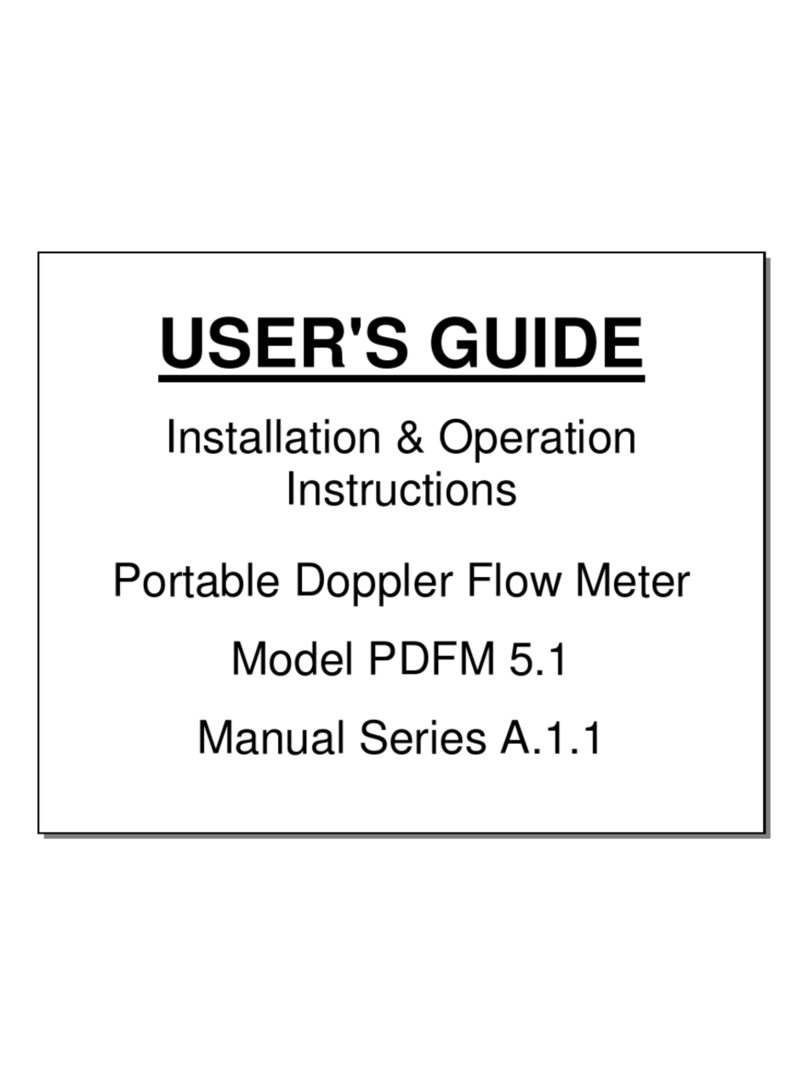
Greyline Instruments
Greyline Instruments PDFM 5.1 user guide

Leister
Leister 142.723 operating instructions
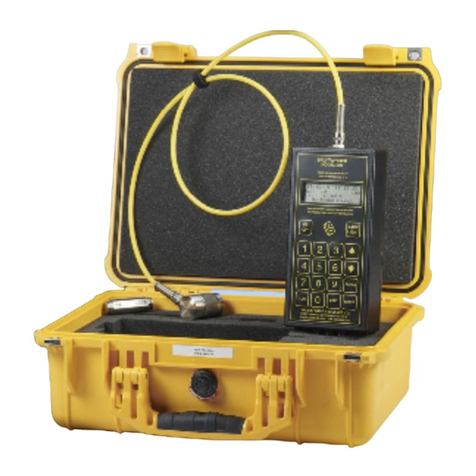
VALLEY FORGE & BOLT
VALLEY FORGE & BOLT SPC4 406A user manual
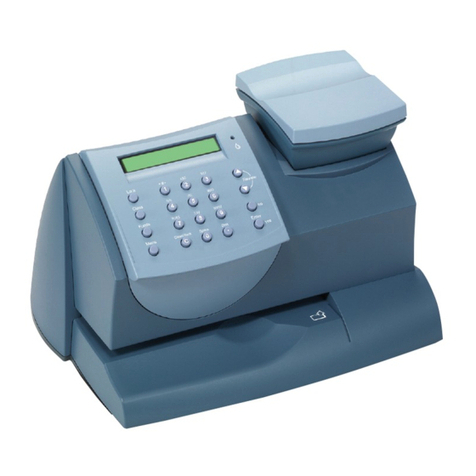
Pitney Bowes
Pitney Bowes MAILSTATION 2 Quick install guide
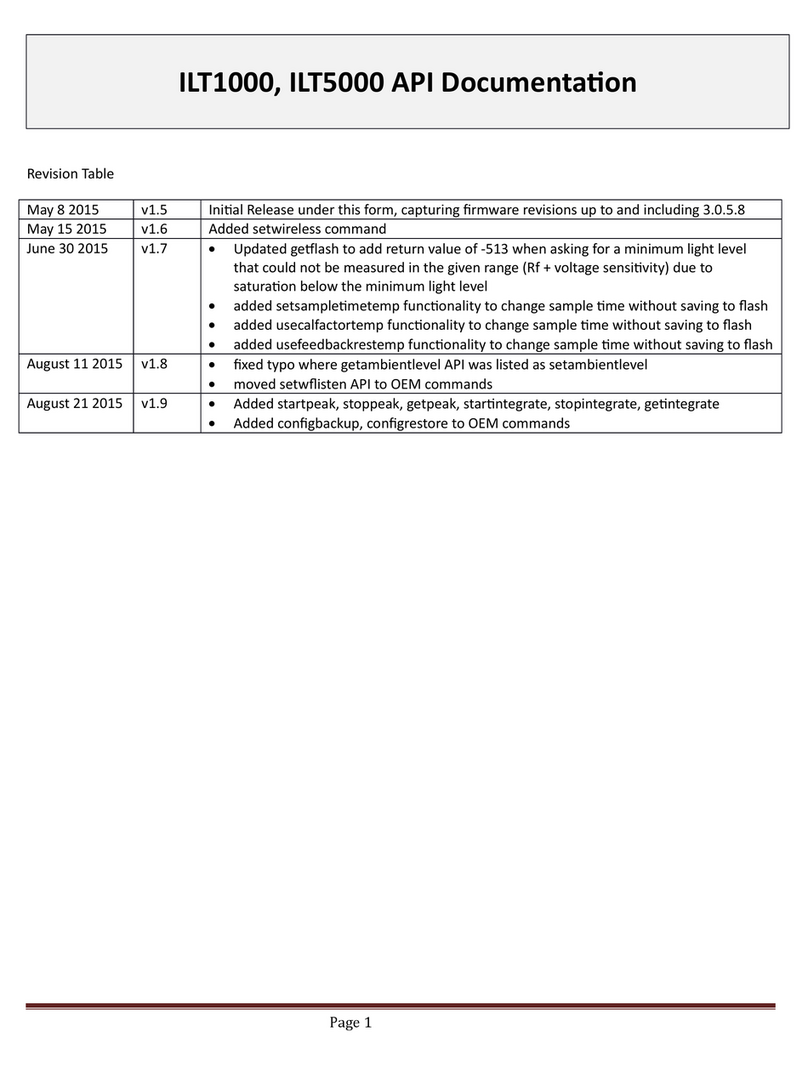
International Light Technologies
International Light Technologies ILT1000 API Manual

HydroPoint
HydroPoint WaterCompass FM300 installation instructions
